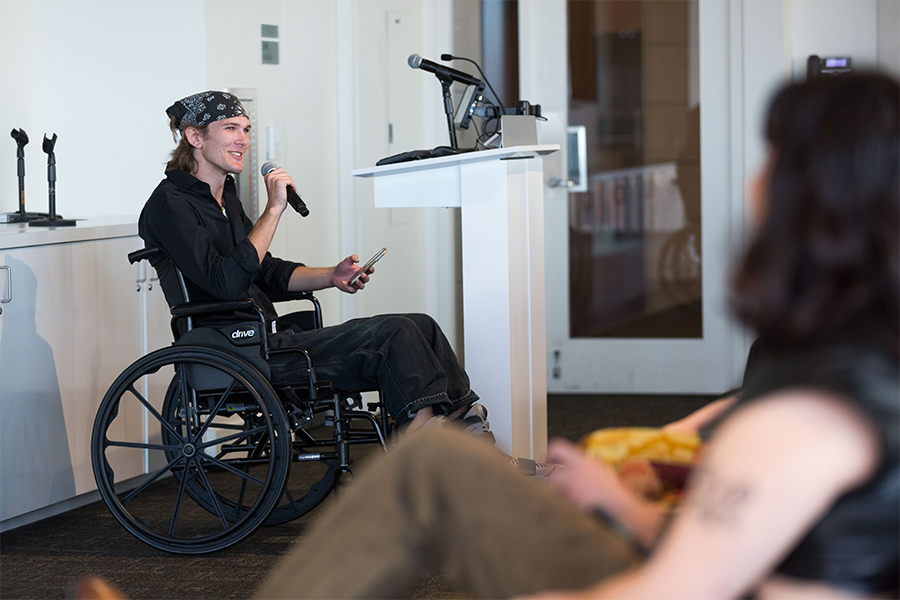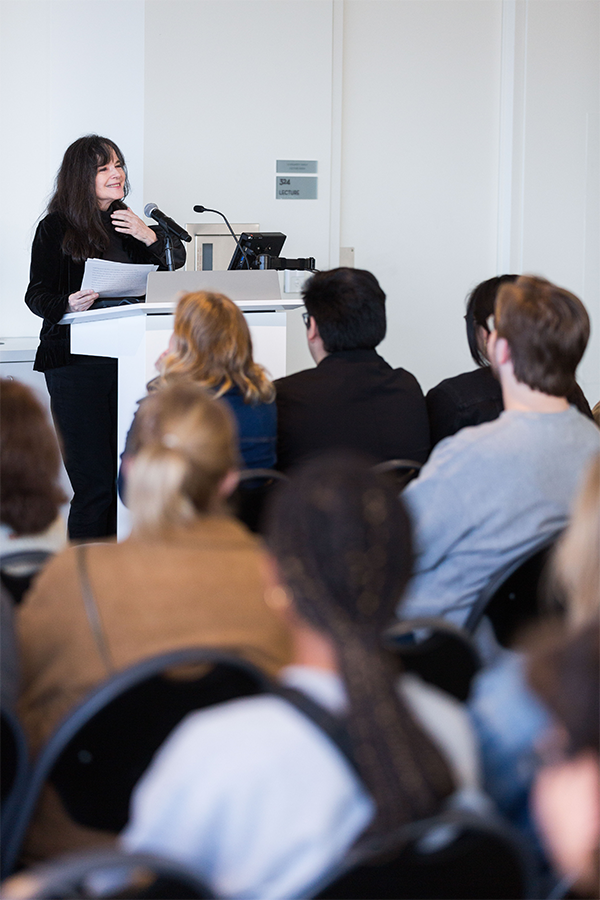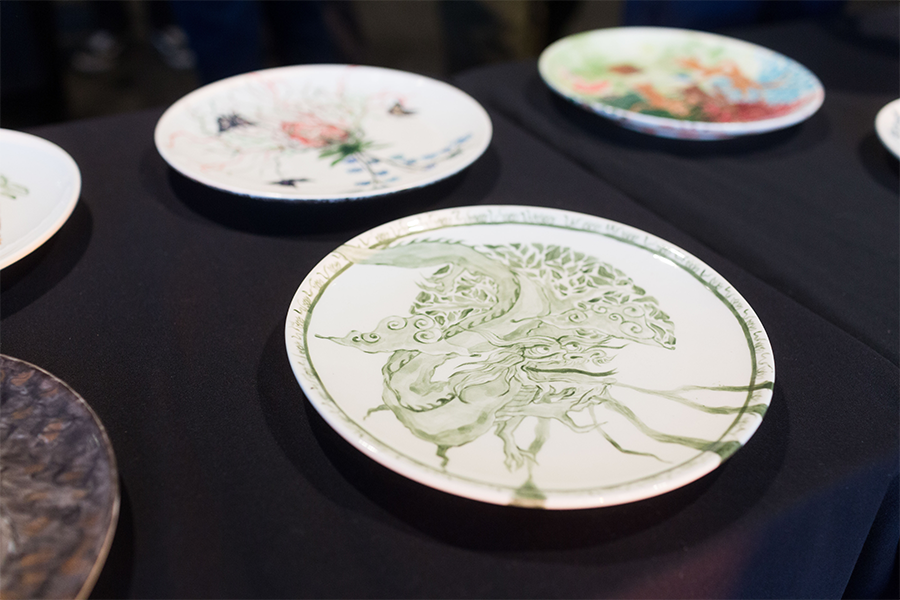
Students from the LMU Bellarmine College of Liberal Arts and College of Communication and Fine Arts came together to celebrate Earth Day and the Spring Equinox with an event featuring poetry and plates. On Friday, March 24, the inaugural Eco-Poetry event, hosted by the William H. Hannon Library, highlighted student creative works from poet and Clinical Associate Professor of English Sarah Maclay’s Fall 2022 EcoPoetry class and Art and Art History Lecturer Glenn Grishkoff’s Spring 2023 EcoArt course.
The EcoPoetry class, which had formerly been limited to English majors, was opened for the first time this year to Environmental Studies majors as well. Professor Maclay introduced the room to her students and her class, which focused on cultivating a connection to the natural world and our place in it through an experiential lens. Part of the point of this,” as Maclay puts it, “is to begin to move from the anthropocentric (or egocentric) toward the ecocentric—to become more attuned to and aware of what my dad once called ‘the other residents,’ when we pulled off a dirt road and spent an hour or so in a clearing, just watching and listening to the deer and the hawks and breezes in among the aspen and pine one summer evening.”
In her remarks she also reflected on the “warm and nourishing human ecosystem” that they had created to share their poetry, field notes, and observations, and was moved to tears talking about the impact her students had on her. “Together, I think we were trying to somewhat decenter the human lens we necessarily first look out from, in order to engage and interact more as part of the continuum,” she said. After Maclay set the stage, 14 students took the podium to share some of the poetry they had written.

Students presented several different types of poetry: poems of place, animal poems, longer meditative poems, poems of environmental alarm, advocacy poems interrogating our own practices, persona poems, poems of ‘eco-eros,’ and poems ruminating on and celebrating nature in all its forms.
Some standout lines included the devastating, “She chokes on the excrement we call ingenuity” from the poem “Grieving Gaia” by Zoe Strickland (’24 Environmental Studies major; Peace and Justice Studies minor); and the alliterative “Propagating personification / of humanity’s fallacies,” from a poem “Truthfully, they are just birds” by Sean-Ryan Petersen (’23 English major), which criticizes the anthropomorphizing and vilifying of animals. Also, in Mac McElroy’s (’23 Environmental Studies major) poem “I’ve turned all the foliage black” one feels words coming alive, revealing an intimate connection to nature: “I ripped petals and stems into my skin / to feel something– / to feel the anguish of their thirst…”
After the poetry readings, the event shifted to Professor Glenn Grishkoff and he introduced his Ecology of Art ceramics course. He started by noting that ecology is a new focus in his career, and that he has found the process of intertwining it with his background in sculpture and ceramics to be “amazing” and “inspiring.” He began the semester by teaching students how to make their own brushes out of elk and deer hair, and then they brought the brushes to the beach. Students “learned the breath of the ocean surf” by painting Japanese ensō circles using harm-free sumi ink. Known as “the breath of life,” Japanese monks paint ensō circles to warm up before meditation. Similarly, students in Professor Grishkoff’s class dipped their ink into the ocean, then painted onto the sand, where the circles disappeared with the breath of the surf. In this way, Grishkoff said, “I am their first teacher, and the surf is their second teacher.”
In the back of the library suite where the ceramic plates created by the students were on display, Grishkoff discussed how the project was inspired by an article titled “The Intelligence of Plant Life.” The piece critiques the assumption that plants are lower in status than either animals or humans. Students, therefore, were charged with creating pieces in which plants were visually elevated to human and animal stature. And although they all worked on the same basic ceramic plate, the variation in color, imagery, and theme were breathtaking.
“Nature” art often focuses on the “big” and “majestic” aspects of the natural world—the Grand Canyon, Yosemite, and majestic elks, just to name a few. But “nature” encompasses everything around us, including and especially that which is often overlooked. Through EcoArt and EcoPoetry, Professors Maclay and Grishkoff have helped their students to think deeply about nature and how they can connect to it through creative outlets and, most importantly, in ways that go beyond the obvious.




